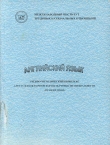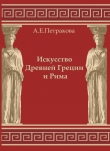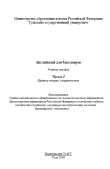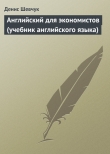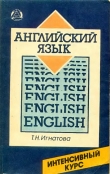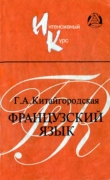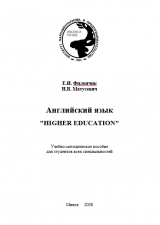
Текст книги "Английский язык. Higher education "
Автор книги: Екатерина Филончик
Жанры:
Иностранные языки
,сообщить о нарушении
Текущая страница: 3 (всего у книги 5 страниц)
My husband is a physics ________ at the local school.
He is on board of ___________s.
I decided to include Mathematics into my college ___________.
PART III
DIRECTIONS:
Translate the sentences into Russian. Be ready to give their back translation.
1. Has Microeconomics been introduced into the institute curriculum?
2. I see that «Hamlet» is on this year’s syllabus for the English literature.
3. Where is the first-year timetable?
4. According to the timetable we have no history class on Monday.
5. The teaching staff of the college is/are excellent.
6. The department of physics is in the Faculty of Science.
7. The History Department is/are using this room.
8. He has a BA/BSc. He has an MA in linguistics. He has an MSc in astrophysics.
ACTIVITY B
SCAN THE TEXT 1 HIGHER EDUCATION IN THE USA
DIRECTIONS:
Read the headline of the text. What do you want to find out when you read it? Write some questions.
Read the text quickly and answer the questions you have written.
ACTIVITY C
READING
DIRECTIONS:
Now read.
HIGHER EDUCATION IN THE USA
Out of more than three million students who graduate from high school each year, about one million go on for «higher education». It is not easy to enter a college at a leading university in the United States. Such a college may accept only one out of every ten who apply. At present there are over 3,300 different institutions of higher education in the USA with more than 12 million students.
Successful applicants at colleges of higher education are usually chosen on the basis of (a) their high school records which include their class rank, the list of all the courses taken and all the grades received in high school, test results; (b) recommendations from their high school teachers; (c) the impression they make during interviews at the university, which is in fact a serious examination; and (d) their scores on the Scholastic Aptitude Tests (SATs). The SAT is a test in mathematics and English language which was introduced in 1947. The SAT is taken in the 11th grade 'of high school (over 1,5 million high school students take it yearly). If a student gets 1600 scores it is considered as a good result, if he or she gets 400 scores such a result is considered to be poor. A SAT can be taken two or three times, so that the student can improve the results if he or she wishes to do so.
The system of higher education includes 4 categories of institutions:
(1) the two-year, or community college, which is financed by the local authorities and which is intended to satisfy the needs of the local community in different professions. Tuition fees are low in these colleges, that is why about 40 percent of all American students of higher education study at these colleges. On graduation from such colleges American students can start to work or may transfer to four-year colleges or universities;
(2) the technical training institution, at which high school graduates may take courses ranging from six months to three – four years, and learn different technical skills, which may include design, business, computer programming, accounting, etc.,
(3) the four-year college which is not part of a university. The graduates receive the degree of bachelor of arts (BA) or bachelor of science (BS),
(4) the university, which may contain (a) several colleges for students who want to receive a bachelor's degree after four years of study; and (b) one or more graduate schools for those who want to continue their studies after college for about two years to receive a master's degree (Master of Arts (MA) or of Science (MS) or a doctoral degree (Ph. D.– Doctor of Philosophy, in some science). There are 156 universities in the USA.
Any of these institutions of higher education may be either public or private. The public institutions are financed by the state. Of the four-year institutions 28 percent are public, and 72 percent are private, but most of the students, about 80 percent, study at public institutions of higher education, because tuition fees here are much lower. If at the end of the 1980s tuition fees at private institutions were 12 thousand dollars a year and even higher, at public institutions they were 2–5 thousand dollars a year.
Many students need financial aid to attend college. When a family applies for aid, an analysis is made of the parents' income. The aid may be given in the form of a grant, or stipend which the student doesn't need to pay back. It may be given as a loan, which the student must pay back after college. The third type of aid may be given in the form of some kind of work, which the student has to do at the university or college, for which he gets some money. Most students work, especially during the summer vacation.
The academic year is usually nine months, or two semesters of 4 and a half months each. Studies usually begin in September and end in July. There are summer classes for those who want to improve the grades or take up additional courses. Students who study at a university or four-year college are known as undergraduates. Those who have received a degree after 4 years of studies are known as graduates. They may continue with their studies and research work for another 2 years as graduates in order to get a higher degree. The undergraduate students who study for four years are called as follows: (a) the first-year student is called a freshman; (b) the second-year student is called a sophomore; (c) the student of the third year is known as a junior; and (d) the fourth-year student – a senior.
During one term or semester a student will study four or five different subjects. The students' progress is controlled through oral or written tests, term or course papers and a final examination in each course. Each part of a student's work in a course is given a mark which helps to determine his final grade. A student's record consists of his grade in each course. College grades are usually on a five-point scale: A – is the highest mark and is usually equal to 5 points, В = 4, C = 3,D = 2, E or F means failure. The points make it possible to calculate the GPA (grade point average). Normally, a minimum GPA of 3,5 points is necessary to continue their studies at the college or university and to graduate.
Each college or university has its own curriculum. There are courses that every student has to take in order to receive a degree. These courses or subjects are called major subjects or "majors". At the same time there are subjects, which the student may choose himself for his future life. These courses are called "electives". A student has to earn a certain number of "credits" (about 120) in order to receive a degree at the end of four years of college. Credits are earned by attending lectures or laboratory classes and completing assignments and examinations. One credit usually equals one hour of class per week in a single course during the semester.
Thus, we see that the American system of higher education gives the student much choice which he may realize according to his will. His achievements in his studies and future work depend upon himself. At the same time many Americans are not satisfied with the condition of higher education in their country. The high tuition fees make it difficult for low-paid American families to send their children to university. This is especially true for young people from minority groups – the Blacks, Asians, etc. Though much is spent by the state for education, American universities complain that these funds are becoming smaller with every new year. The equipment which is used at the universities for research is not modern enough, and the universities do not have the money to install new equipment. Under such conditions tuition fees are growing and many talented young people cannot receive higher education. Critics point out that one of every eight highly talented high school graduates does not go on to university or college, and only half the students who enter college for a bachelor's degree actually achieve their aim. All these problems are widely discussed today in American society.
ACTIVITY D
READING COMPREHENSION
PART I
DIRECTIONS:
Fill in the blank with the correct word:
It is not easy to enter a college or a university in the United States, because they may accept only one out of every ten who … .
Applicants are usually chosen on the basis of their high school … .
Among the four types of higher education institutions there is the two-year, or … …, which is financed by the local authorities and which is intended for local needs.
After four years of studies at a four-year college the graduates receive the degree of … … …, or … … … .
More students study at public institutions of higher education because … fees here are much lower.
When a student applies for aid, an analysis is made of the parents' … .
Many universities in the USA do not have the money … new equipment which is necessary for research.
PART II
DIRECTIONS:
Complete the sentence with the best answer (a, b or c) according to the information in the text:
1. Out of more than three million students who graduate from high school each year
a) most of them continue their studies and receive higher education
b) about one million go on for higher education
c) about one half join the workforce
The technical training institution is intended for high school graduates
to learn different technical skills and trades necessary for industry
to develop their knowledge of. foreign languages
to receive the degrees of bachelor of arts, or of science
Of the four-year institutions 28 percent are public and 72 percent are private, but
most of the students study at public institutions
most of the students study at private institutions
the tuition fee is the same for both types of higher school
During one term or semester a student will study
four or five different subjects
both majors and electives
many subjects that he will need in future life
Though much is spent by the state for education
American universities complain that these funds are becoming smaller with every new year
American universities receive much support from rich people
much money is received by the universities from their research programmes
PART III
DIRECTIONS:
III. Find out whether the statement is true or false according to the information in the text:
The SAT is a test in English language and literature which can be taken only once.
Tuition fees are high in community colleges.
The aid to a student may be given in the form of a grant, or stipend which the student must pay back after college.
Those who study at a university or four-year college are known as undergraduates, and those who have received a degree after four years of studies are known as graduates.
A first-year student is called a sophomore, and a second-year student – a freshman.
During one term or semester a student will study six or seven different subjects.
PART IV
DIRECTIONS:
Answer the questions:
What are the four conditions which every applicant must know to enter a college of higher education?
When does a graduate receive the BA or BS?
Why do most students study at public institutions of higher education?
How can a student receive financial aid from a college?
What is the difference between "majors" and "electives"?
Does a student have to earn a certain number of "credits" to receive a degree at the end of four years of college?
On what scale are college grades in the USA?
ACTIVITY E
ORGANIZING YOUR THOUGHTS
PART I
DIRECTIONS:
Working in groups discuss possible answers:
Why are many Americans not satisfied with the condition of higher education in their country?
Name the four categories of higher educational institutions in the USA.
How is the students' progress controlled during the term?
PART II
DIRECTIONS:
Role play the following situation:
Student A: Imagine you’re an American. Ask about the system of higher education in B’s country.
Student B: Answer A’s questions.
ACTIVITY F
WRITE AND SPEAK
PART I
DIRECTIONS:
Give a summary of the text.
PART II
DIRECTIONS:
Ask questions about the texts and let your fellow-students answer them.
PART III
DIRECTIONS:
Express your opinion and fill in the following table:
Britain’s higher education
U.S. higher education
Belarusian higher education
Pros
Cons
ACTIVITY G
LISTENING COMPREHENSION:
DIRECTIONS:
Listen to the conversation between a receptionist and a student enquiring about a course. While listening take notes about the essential characteristics of the course.
season of the year
full time/part time
intensive/extensive
length of the course
hours per week
number of students in class
dates of the course
fee
deposit
accommodation
Enquiring about a Course
Receptionist: Good morning. Can I help you?
Student: Yes please. I would want to have some information about the courses at Swan School.
R: Is that a summer course you're interested in?
S: Yes. Yes, please.
R: Yes. Fine. OK. Well, we have … erm … short intensive full-time courses during the summer.
S: Mm-mm. I would want to know the length of one course.
R: Yes. Each course lasts for three weeks.
S: How many hours per week, please?
R: Well, it's about twenty-three hours a week. Usually four and a half days each week.
S: You must have a lot of students in the class, haven't you?
R: We have a lot of students in the school but in the classes only about between twelve and fourteen students.
S: Twelve and fourteen. Could you please give me the dates of the first and the second course?
R: Yes, certainly. The first course begins on 3 July and lasts until 20 July and the second course is from 24 July until 10 August.
S: What about the fees per course?
R: Yes, each … each course costs $150 plus VAT, which is 15 per cent and a $5 registration fee.
S: And deposit, please?
R: Yes, for each course we need a deposit of $20 and the $5 registration fee.
S: Oh thank you. Do we have to find our… our own accommodation?
R: No, we can do that for you. We have a lady who arranges the accommodation for you with a family.
S: How much does it cost?
R: Well you can choose to have bed and breakfast only which is $20 a week, or bed, breakfast and dinner which is about $27 a week.
S: $27. Thank you very much.
R: You're welcome.
ACTIVITY H
SELF-WORK:
PART I
DIRECTIONS:
Study the following topical vocabulary:
– to continue in higher education
продолжить образование в вузе
a community college
местный колледж
a technical school
техническое училище
a vocational school
профессиональное училище
– to have a special subject area
специализироваться в определенной области
a college of liberal arts
колледж свободных искусств
a humanity
гуманитарный предмет
a social science
общественная наука
a natural science
естественная наука
a program for undergraduates
программа для студентов
to get an undergraduate degree in the arts or sciences
получить степень (бакалавра) в области гуманитарных или естественных наук
to complete a course of study
закончить курс обучения
to get Bachelor of Arts or Science degree
получить степень бакалавра гуманитарных или естественных наук
to go on for a graduate or professional degree
продолжить обучение с целью получения степени магистра или доктора или профессиональной степени
programs for graduate and professional study
программы обучения для аспирантов и профессионального обучения
to get money from a source
получать средства из определенного источника
a publicly funded university
университет, финансируемый из общественных источников
a privately funded university
университет, финансируемый из частных источников
to be funded by a religious group
финансироваться религиозной общиной
to have graduate or professional
programs
предлагать программы обучения аспирантов и профессиональные программы
a course in academic subjects
академический курс
a non-academic subject
неакадемический предмет
to have a high school diploma
иметь диплом об окончании средней школы
–job training
профессиональная подготовка, обучение профессии
to give training for work in an area
обеспечить подготовку к работе в области
PART II
DIRECTIONS: Now read .
Text 2 Higher Education in the USA
In the United States, a student who has finished high school may want to continue in higher education. There are several ways to do it: universities, colleges, community colleges, and technical or vocational schools.
A university in the United States usually has several different colleges in it. Each has a special subject area. There may be a college of liberal arts where humanities, social sciences, natural sciences and mathematics are taught. There may be a college of education and a college of business. A program for undergraduates usually takes four years. University students get an undergraduate degree in the arts or sciences. If they complete a course of study they get Bachelor of Arts or Science degree. Students may leave the university at this time. They may also go on for a graduate or professional degree. The university always has programs for graduate and professional study in many subjects.
The university may get money from several different sources. A publicly funded university gets some money from the state government. A privately funded university gets money only from private sources. Or the university may be funded by a religious group.
College students usually spend four years at school, too. A college does not have graduate or professional programs. If a college student completes a course of study in arts or science, he or she gets Bachelor of Arts or Science degree. If college students want to continue for a graduate or professional degree, they must go to University. The college is usually funded in one of the three ways already described.
The program of study in the community college usually lasts two years. Not all of the subjects taught there are the usual school subjects. The community college may give courses in the regular academic subjects or subjects like dental technology, sewing and other non-academic subjects.
Not all students of the community college have a high school diploma. They may then go to a college for two more years to get the bachelor's degree. Community colleges are nearly always publicly funded.
The technical or vocational school has only job training, it has no academic program. Students may have a high school diploma, or not. Programs may take from six months to two years and more. The technical or vocational school gives training for work in areas such as electronics, carpentry and others.
PART III
DIRECTIONS:
Answer the questions:
1. What are the ways to continue in higher education in the USA?
2. What colleges does a university in the United States usually consist of?
3. What degrees are offered at universities?
4. What sources can a university get money from?
5. What programs and degrees are offered at a college?
6. What courses are given at a community college?
7. What kind of program does a technical or a vocational school offer?
PART III
DIRECTIONS:
Translate into English:
1. Молодые люди, окончившие школу, могут продолжить образование в университете, колледже, техническом или профессиональном училище.
2. Колледжи университета специализируются в различных областях: гуманитарных, общественных и естественных науках, образовании или бизнесе.
3. Университет предлагает программу для студентов, аспирантов и профессиональные программы.
4. Если молодой человек заканчивает курс обучения, он получает степень бакалавра гуманитарных или естественных наук.
5. Если студент продолжает обучение, он получает степень магистра или доктора или профессиональную степень.
6. Университеты могут финансироваться из общественных или частных источников, а также религиозной общиной.
7. Если студент колледжа заканчивает курс обучения гуманитарным или естественным наукам, он получает степень бакалавра.
8. Местный колледж предлагает академические курсы и курсы неакадемических предметов.
9. Технические и профессиональные училища предлагают подготовку в различных областях.
ACTIVITY I
SUPPLEMENTARY READING:
PART I
DIRECTIONS:
Read the text.
Text 3 A College in America
I. Choosing a college
If you meet a group of twelfth grade students they are all talking about one thing: What are they going to do next year? Some students don’t want to go on with their education. When they leave school they will look for a job. Other students are thinking about colleges. They are each writing letters to three or four different colleges, and sending in forms. Colleges accept only those students who have done well in high school. They want to meet these students before they decide to accept them. Colleges want to know why students have chosen them, and how they will pay for their college education.
Students choose from about 2000 colleges in the US. Every school has its own special flavor. Top students may choose famous « Ivy League» schools like Princeton, Harvard, or Yale. They are the oldest colleges in the country – excellent, but very expensive.
Other students choose large universities because they teach lots of different subjects. Some choose small religious colleges. There are differences between colleges and the type of study programs they have. For example, many four-year «Liberal Arts» colleges are small and teach only the most important subjects for a general education. State universities are large. They teach many subjects and have some programs that last longer than four years. State universities are paid for by money from the state. Students from that state pay less to study there. Colleges are paid for privately, so students usually pay more to go there.
Whether a student chooses a small college or a large university, the cost of higher education in the United States is rising every year. Many parents find it too expensive. Colleges and universities often have money for students who cannot pay, but it is not enough for everyone. Some have part-time jobs while they are at college. Studying and working at the same time can be very hard. But these students think it’s worth all the hard work to get the college education they want.
II. Going to college
Going to college usually means leaving home for the first time. Most college students live on campus, which is the place where all the college buildings are. Some have rooms in buildings called dormitories. Others may live in «fraternity» or «sorority» houses. These are clubs of men or women students. They choose their members carefully. Some students prefer to live off campus. They try to find rooms or apartments near the campus.
A college diploma is called a degree. There are three degrees that students can earn. The first four years of college gives an undergraduate degree. Students in undergraduate school study lots of subjects. They do not choose their most important subject until the end of undergraduate school. They earn credits for the classes they complete. They must have a certain number of credits in their most important subject and some credits in other subjects, too. Then they get a Bachelor of Arts (BA) degree.
With a BA degree, college students can go on to graduate school. After two or three years, they can get a Master of Arts (MA) degree. They take only subjects that lead to the MA. These are subjects that will be important for their later work. Graduate school can prepare students to become teachers or lawyers, for example. With a Master of Science degree (MSc), they can become scientists. They can prepare for work in business with a Master of Business Administration degree (MBA). Students can go on in graduate school to get a Doctor of Philosophy degree (PhD). That is the highest degree university students can get. Most university teachers must have a PhD.
In the U.S., many students stay on at college to get a master’s degree, because a bachelor’s degree is often not enough to get the job they want. It can take a long time, and a lot of money. It can take at least ten years to become a lawyer, and five or six years to become a teacher. Many students are in their mid or late twenties when they finally start work.
PART I
DIRECTIONS:
Say whether these statements are true or false. Correct the false ones.
1. To enter a college students have to go through a set of oral and written examinations.
2. Students can apply for admission to a number of colleges.
3. All you need to become a student at an «Ivy league» college is the money to pay for your education.
4. State universities offer shorter study programs than colleges.
5. Many students receive grants to pay their tuition fee.
6. Dormitories are recreation rooms.
7. Fraternities accept both men and women as their members.
8. Students receive a general education until they get their first degree.
9. Graduate students study a wide range of subjects.
10. Only a PhD entitles you to work as a school teacher.
PART II
DIRECTIONS:
Check Yourself
Choose the right variant
1. After he’d graduated from the university he became a(an) ____.
a) senior; b) aspirant; c) postgraduate
2. Do you ___ school?
a) visit; b) attend; c) go to
3. He is doing his second year in Harvard. He is a (an) ___.
a) pupil; b) undergraduate; c) graduate
4. Let me introduce our colleague from Washington. He is a ___ in the school.
a) headmaster b) tutor; c) principal
5. She works and studies. She is ___.
a) full time; b) graduate; c) part time
6. The student gets the help of his own ___ whom he meets regularly.
a) princi pal; b) tutor; c) monitor
7. After three years of studies and successful final examinations in British University you can get a ___ degree.
a) PhD; b) BA; c) MA
8. Studies such as ancient and modern literature, history are called ___.
a) humanity; b) humanities; c) humanitarians
9. Before he left school, his father told him to start thinking about choosing a___.
a) business; b) career; c) profession
10. Before you are called for interview they will read your letter of ___ carefully.
a) appliance; b) request; c) application
11. Most member of our staff are university ___.
a) undergraduates; b) graduates; c) professionals
UNIT 4
TOPIC “OUR INSTITUTE”
TOPICAL VOCABULARY
parliamentarism, n
entrepreneurship, n
found, v
faculty, n
short form of studying
journalism, n
political science
law, n
culture studies
document studies and information
supply of management
accounting, analysis and audit
finance and loan
state management
economics and business management
international economics
business-administering
journalist, n
specialist, n
lawyer, n
qualification, n
economist, n
manager, n
term of studying
certificate, n
special secondary economic education
according to, phr prep
speciality, n
admit, v
center for rearing and pre-institute
training, n
provide, v
training courses
professionally-oriented, a
focus, v
preparation, n
centralized testing
basic, a
free, a
internet-technology, n
participant, n
candidate of sciences
professor, n
assistant professor, n
own, a
unique, a
publishing center
multimedia means
broad, a
network, n
equipment, n
staff, n
recognize, v
co-founder, n
locate, v
motto, n
elk, n
wise, a
application, n
applicant, n
entrance exams
rules of admission
admission commission
additional, a
парламентаризм
предпринимательство
учреждать
факультет
сокращенная форма обучения
журналистика
политология
правоведение
культурология
документоведение и информационное
обеспечение управления
бухучет, анализ и аудит
финансы и кредит
государственное управление
экономика и управление производством
мировая экономика
бизнес-администрирование
журналист
специалист
юрист
квалификация
экономист
менеджер
срок обучения
аттестат
специальное среднее эконом. образ.
согласно, в соответствии с
специальность
принимать
центр по воспитанию и довузовской подготовке
обеспечивать
подготовительные курсы
профессионально-ориентированный
концентрировать
подготовка
централизованное тестирование
основной
бесплатный
интернет-технология
участник
кандидат наук
профессор
ассистент профессора
собственный
уникальный
издательский центр
мультимедийные средства
широкий
сеть
оборудование
персонал, кадры
признавать
соучредитель
размещать
девиз
лось
мудрый
заявка
абитуриент
вступительный экзамены
правила приема
приемная комиссия
дополнительный
GETTING STARTED
What do you know about the development of parliamentarism and entrepreneurship in our country?
What do you know about the history of foundation of our Institute?
Where is the Institute of Parliamentarism and Entrepreneurship located?
How could you characterize the building of the Institute?
What do you know about the training courses of the Institute?
Do you think it is useful to get a diploma of an economist or a specialist in the field of political sciences?
ACTIVITY A
SCAN THE TEXT 1 OUR INSTITUTE
DIRECTIONS:
Before you begin to read, look at these topics. There is each topic for each paragraph. Look quickly
at the reading to find these topics. Do not read every word at this point. Write the number of the
paragraph next to the topic of that paragraph.
– Monologue of a student of the Socio-Economic faculty.
– Everyday activities of the students at full-time studying.
– The structure of the Institute.
– The Institute of Parliamentarism and Entrepreneurship is one of famous educational
institutions in Minsk.
– The activities of the students at correspondent studying.
ACTIVITY B
READING
DIRECTIONS:
Now read.
OUR INSTITUTE
1. Every citizen in our Republic has the right to education. This right is guaranteed by the Constitution.
After finishing school, some young people may want to continue their education. There are different kinds of higher educational institutions for them: state and non-state ones. The Institute of Parliamentarism and Entrepreneuship is among them. It is not very large yet, but it is already known in the Republic for training highly-qualified specialists in different fields of our national economy.
2. The Institute is rather new. It was founded only in 1993. There is one faculty in it: Socio-Economic one which covers a lot of specialities: a lawyer, a specialist in political sciences, a business-administrator, an economist and others. Today our Institute is a collective member and representative of the International Staff Academy in the Republic of Belarus. It is also a co-founder of the International Educational Consortium located in Prague. The motto of our Institute is DOCEMUS VIVERE – we teach to live. Our emblem is an elk – a symbol of wise power.
